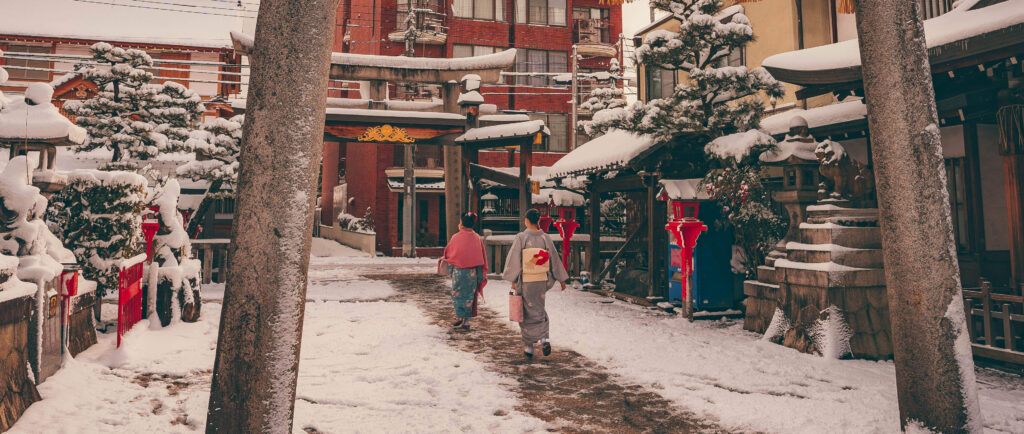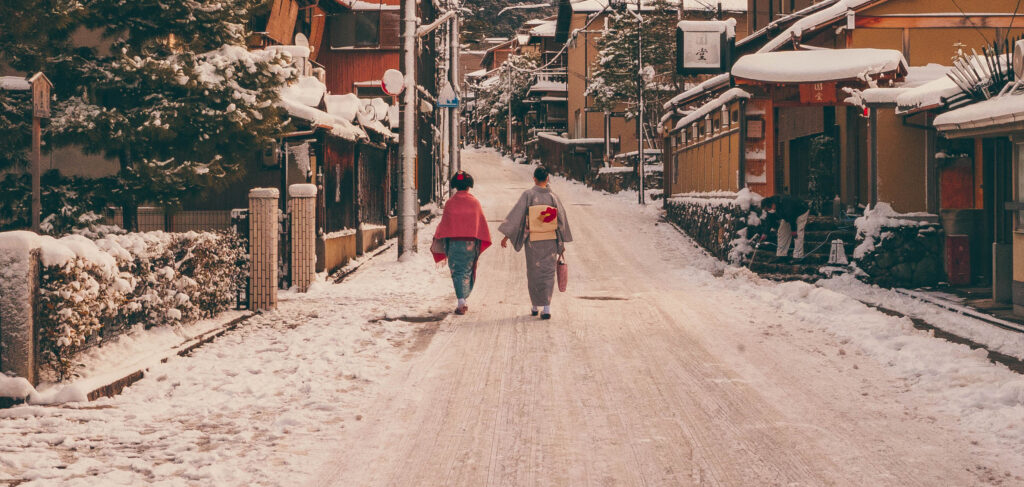
You wouldn’t know it from the body of photography books out there, but snow is fairly uncommon in Kyoto. I suppose it’s the infrequency of it that brings out the cameramen in droves when it does finally fall. I had rather naively expected this idealized version of winter in Kyoto to be fairly common, but was a little disappointed on living here to count the odd gentle dusting here or there, perhaps no more than once in a given year, if at all. I promised myself I’d try to make the most of those rare days.
The trouble was, ever the servile salaryman, with such light blizzards being at the year’s coldest, in February, I would usually have already splurged, or, more likely, failed to use and therefore forfeited, my limited annual leave days just a few months prior at the end of the previous calendar year. This meant that snow days to me were simply a wonderful barrier in catching my morning commuter train into the city centre, through the ensuing chaos and delays.
That said, one particularly chilly winter, a promised snowstorm had come a couple of days later than forecasted, giving me enough of a window to pack an umbrella and a pocket camera, just in case. I thought special moments tend to happen when it snows in Kyoto.
In my mind, I had just finished watching Kore-eda’s nostalgic adaptation of The Makanai, a story about the cook at a geisha boarding house and a great initiation into this secretive world. The only real issue I took with the story, as authentic as it sets out to be, was how it may yet give more stock to another romanticized version of Kyoto where geisha can appear beside you on a footpath at any moment. The reality, as many visitors often find, is that spotting a geisha, even in Gion to the east of the city, can be as rare as the flurry into which I was about to set out.

The advance weather warning had given me the foresight to prepare a 45-minute head start on my normal commute. Sadly, those 45 minutes were given to a rather soggy wait on the train platform, and after overcoming the snow-train chaos, I arrived into the city late for work. However, instead of rushing to the office, something itself best avoided on the slippery narrow streets of the day, I decided to reclaim some of my forfeited 45 minutes back, and squeeze in a bit of a cheeky detour through the teahouses and backstreets of Gion, having correctly assumed that the Higashiyama district where Gion was situated would be rather pleasant in a white dressing, particularly with fewer cars or people.
I was about to take one of my regular shortcuts through Ebisu Shrine, which backs out on to Miyagawa-cho, a popular Hanamachi ‘flower town’, a geisha district close to the Kamogawa river, when I got my moment. Two in fact. I saw an older gentleman at the shrine give the most animated bow, only to turn a little too quickly and slip over into the snow. Sadly I missed the window to take a snap of this rather entertaining scene, but instead caught sight of why the man had given such an effusive gesture; two young maiko were giving formal greetings to the people here.
While neither in full make-up nor wearing the elaborate kimono I had grown accustomed to seeing, the elegant way in which the two women sauntered past me and greeted the priest here felt unmistakably like the Ochaya Mawari, the neighbourly greeting custom of the story I had recently enjoyed, and I knew immediately that this was that rarest of glimpses into the daily life of a training geisha.
Unlike the Ochaya Mawari in the story however, this was still morning time, so I guessed too early for their daily rounds. What were the maiko doing then? Well, like me, they’d come out to enjoy the snow of course. As they danced around catching snowflakes, I took a couple of respectfully discreet photos, and basked in the charming serendipity of it all.

